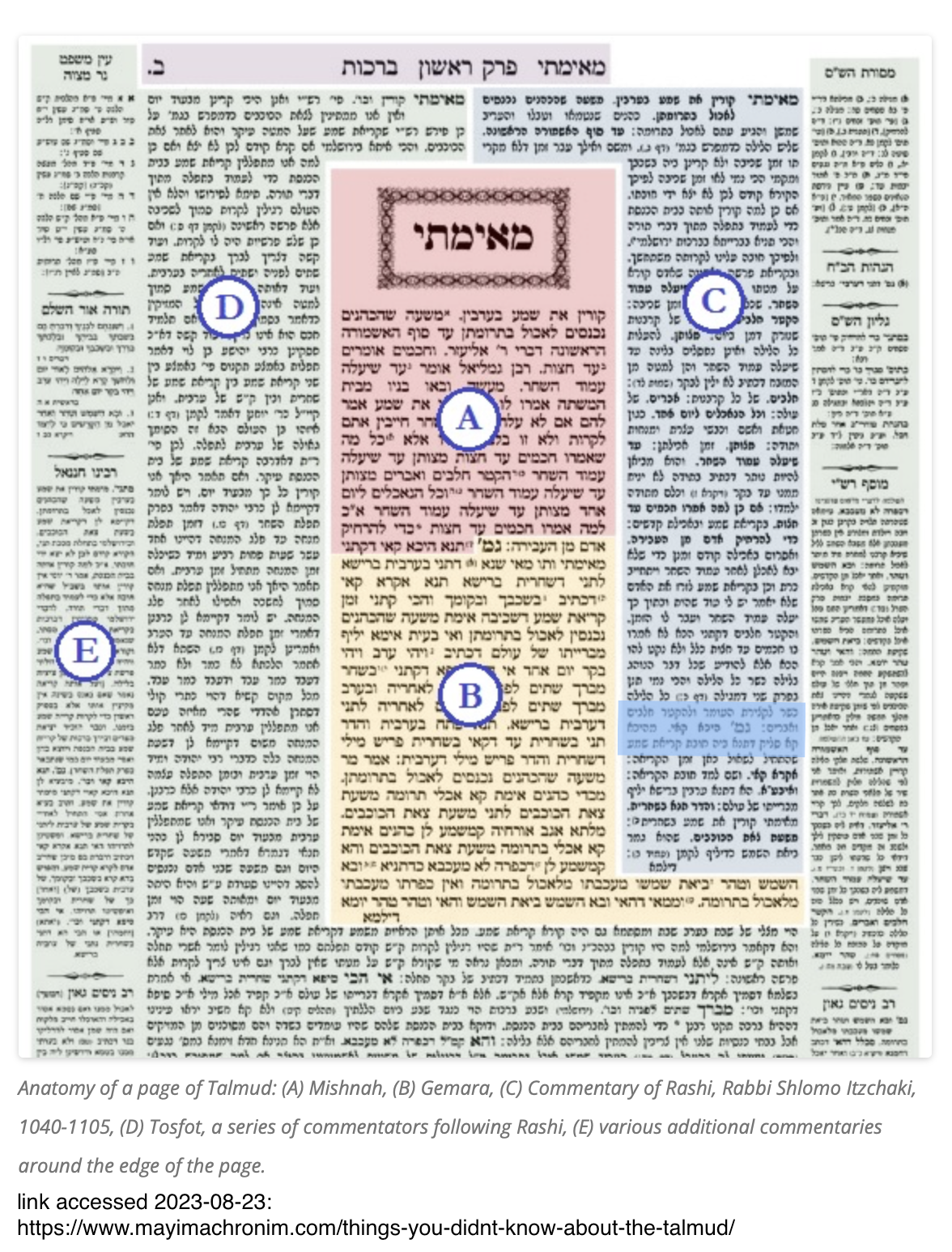Jonathan Rosen - The Talmud and The Internet
APAvar: Rosen, Jonathan (2000). The Talmud and The Internet: A journey between worlds. Picador, USA.
Link: https://worldcat.org/en/title/43115010
pages 9-10:
Consider a page of Talmud. There are a few lines of Mishnah, the conversation the Rabbis conducted (for hundreds of years before it was codified around 200 C.E.) about a broad range of legalistic questions stemming from the Bible but ranging into a host of other matters as well. Underneath these few lines begins the Gemarah, the conversation later Rabbis had about the conversation earlier Rabbis had in the Mishnah. Both the Mishnah and the Gemara evolved orally over so many hundreds of years that, even in a few lines of text, Rabbis who lived generations apart participate and give the appearance, both within those discrete passages as well as by juxtaposition on the page, of speaking directly to each other. The text includes not only legal disputes but fabulous stories, snippets of history and anthropology and biblical interpretations. Running in a slender strip down the inside of the page is the commentary of Rashi, the medieval exegete, commenting on both the Mishnah and the Gemarah, and the biblical passages (also indexed elsewhere on the page) that inspired the original conversation. Rising up on the other side of the Mishnah and the Gemarah are the tosefists, Rashi's descendants and disciples, who comment on Rashi's work, as well as on everything Rashi commented on himself. The page is also cross-referenced to other passages of the Talmud, to various medieval codes of Jewish law (that of Maimonides, for example), and to the Shulkhan Arukh, the great sixteenth-century codification of Jewish law by Joseph Caro. And one should add to this mix the student himself, who participates in a conversation that began over two thousand years ago.
2023-08-17: this paragraph represents a model for a wiki-now-and-then page. Text, commentary, stories, interpretations, and commentaries on all of it, plus a current reader's additions. For computer-based digitized artifacts, layouts and links seem to be key properties.
References:
- Excerpts from Things you didn't know about the talmud:
The Talmud (Berakhot 5a) comments on this that the "Tablets" refers to the Ten Commandments, the "Torah" refers to the Five Books of Moses, the "mitzvah" is the Mishnah, "that I have written" are the books of the Prophets and Holy Writings, and "that you may teach them" is the Talmud. The Mishnah is the major corpus of ancient Jewish oral law, and the Talmud, or Gemara, is essentially a commentary on the Mishnah, with a deeper exposition and derivation of its laws. Today, the Mishnah is printed together with the corresponding Gemara, along with multiple super-commentaries laid out all around the page, and this whole is typically referred to as "Talmud"
